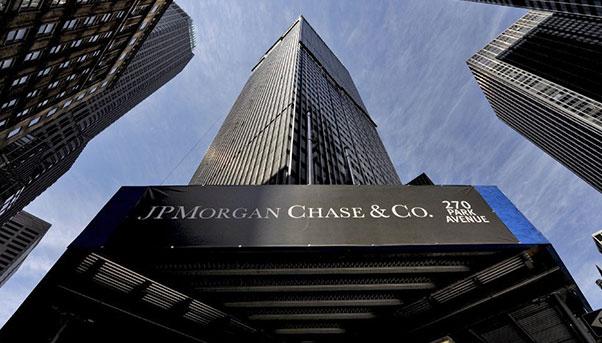Wells Fargo Mission and Vision Statement Analysis

Wells Fargo’s mission statement is “helping customers succeed financially.” The precision of this statement shows how certain and clear the company is when it comes to its mandate and priority in the sector. The emphasis in this statement is on what the customers, and what they stand to gain from the company. The following are the components that emerge from this mission statement:
- Improving communities. Wells Fargo is a company that deals with one of the most influential aspects in the lives of the people, their finances. The company understands how influential finances can be to the economic stability of communities, and that is why the company takes its role very seriously. For instance, it offers its customers a wide range of investment options such as digital investing, self-directed, and corporate options among others. The presence of an investment option for all is a show of how dedicated the company is in ensuring everyone in the society has a chance to change their economics through the packages offered by the company.
- Exceeding expectations. As a leading financial institution, Wells Fargo wants to be among the most dynamic facilities by doing more than its customers expect. In this case, the company goes out of its way to educate its customers on matters of finance. It has a well-organized system for empowering people with financial knowledge while at the same time guiding them on investment options as shown in the second component of the mission statement. The involvement of the company in offering various aids for its customers to finance their college and university education, as well as homeownership tells how much the company values the overall development of its clients.
- Superior financial returns. The attractiveness of this company has particularly been based on the financial benefits the customer gets by investing through it. For instance, Wells Fargo acknowledges few companies are well resourced to adequately manage their finances and taking in mind the complications related to such issues not only at a personal but also at a corporate level. It comes in as a trustable partner to assist in streamlining the operations of their customers through expert support and systems that promise attractive returns. In fact, the various products and services showcases by Wells Fargo shows how comprehensive the company is when it comes to covering its customers for growth.
Introduction
The corporate mission and vision statements of Wells Fargo are a revelation of how determined a company can be in becoming the leader in the industry. The focus on the stability that can impact its clients financially is an indication of the priority of the company in being a trustworthy company of choice for all. Wells Fargo branding system also incorporates an element of security, something that every customer desires wherever finances are involved, and this adds to the leadership potential of Wells Fargo in this industry.
Often, the mission statement of a corporation establishes what such a business does and the specific activities that give it a competitive advantage over the rest. It is also an important aspect that leads to the growth of the company. In the case of Wells Fargo, its mission statement focusses on how the firm can have significant financial impacts on its customers. The vision statement in a company is another of the most important business component that shows the strategic direction the management plans to steer the company.
It also reveals the key developmental goals set to be accomplished over a certain period of time. Wells Fargo’s vision statement describes the leading position of the company and its strength in the sector. Considering the stiff competition characterizing the financial markets, the mission and vision statement of this company have benefited greatly from the support of the corporate core values of this company offer indirectly. The supportive environment and a sense of motivation across the organization come down to the principles that everyone abides in, and these are the core values of the company.
Vision Statement
Wells Fargo’s vision statement is “to satisfy our customers’ financial needs and help them succeed financially.” The company echoes what is contained in its mission statement and adds a sense of leadership in this mission statement. The following components relate to this statement by Wells Fargo:
- Satisfy customers. In this case, Wells Fargo strives to show that the company is not all about its personal growth. Instead, it directs its resources to the needs of who it serves – the customers. It does this by personalizing its products and services to cover all individuals and corporations in various capacities. The varieties it provides are proof that it has succeeded in meeting the needs of this component.
- Financial needs. Wells Fargo is all about finances. The specialization is an element that has distinguished the company from the rest because it emerges as a dependable body in this sector. Moreover, it has no conflicts of interest as all its operations and resources are suited for this primary purpose.
- Help them succeed. The management approaches adopted by Wells Fargo speaks volume about the intention of the company. In everything that it does, Wells Fargo has proven beyond doubt that it seeks to change the financial situation of its customers for the better.
Core values
Wells Fargo’s core values include “what’s right for customers, people as a competitive advantage, ethics, diversity and inclusion, leadership.” These values reveal what the company considers crucial for the overall success of its operations.
In relation to the core values, Wells Fargo is a customer-oriented company, and this shows why it tailors its services and financial products to suit what the customers want in agreement with the first value. In addition, the management recognizes the powers within the people, and therefore, works to ensure it leverages their competitiveness to grow as an institution. The ability of the company to remain trustworthy and a choice for many is vested in its practice of not only doing this as expected but also being sensitive to the differences in the society and embracing all. Such approaches agree with the leadership principle of the company that everyone has financial needs, and these needs matter.
References
- Aithal, P. S. (2015). How an effective leadership and governance supports to achieve institutional vision, mission and objectives. International Journal of Multidisciplinary Research and Development, 2(5), 154-161.
- Babnik, K., Breznik, K., Dermol, V., & Trunk Širca, N. (2014). The mission statement: organisational culture perspective. Industrial Management & Data Systems, 114(4), 612-627.
- Compact, C. (2015). Mission and vision.
- Garavan, T. N. (2007). A strategic perspective on human resource development. Advances in Developing Human Resources, 9(1), 11-30.
- Green Jr, K. W., & Medlin, B. (2003). The strategic planning process: The link between mission statement and organizational performance. Academy of Strategic Management Journal, 2, 23.
- Hackley, C. (1998). Mission statements as corporate communications: the consequences of social constructionism. Corporate Communications: An International Journal, 3(3), 92-98.
- Hirota, S., Kubo, K., Miyajima, H., Hong, P., & Won Park, Y. (2010). Corporate mission, corporate policies and business outcomes: evidence from Japan. Management decision, 48(7), 1134-1153.
- Williams Jr, R., L. Morrell, D., & V. Mullane, J. (2014). Reinvigorating the mission statement through top management commitment. Management Decision, 52(3), 446-459.
- Marimon, F., Mas-Machuca, M., & Rey, C. (2016). Assessing the internalization of the mission. Industrial Management & Data Systems, 116(1), 170-187.
- Maull, R., Brown, P., & Cliffe, R. (2001). Organizational culture and quality improvement. International Journal of Operations & Production Management, 21(3), 302-326.
- Rajasekar, J. (2013). A comparative analysis of mission statement content and readability. Journal of Management Policy and Practice, 14(6), 131-147.
- Slater, S. F., Olson, E. M., & Hult, G. T. M. (2006). The moderating influence of strategic orientation on the strategy formation capability–performance relationship. Strategic Management Journal, 27(12), 1221-1231.
- Taiwo, A. A., Lawal, F. A., & Agwu, E. (2016). Vision and Mission in Organization: Myth or Heuristic Device? The International Journal of Business & Management, 4(3).
- Urde, M., Baumgarth, C., & Merrilees, B. (2013). Brand orientation and market orientation—from alternatives to synergy. Journal of Business Research, 66(1), 13-20.
- Wells Fargo – About.
- Wilson, A. M. (2001). Understanding organizational culture and the implications for corporate marketing. European Journal of Marketing, 35(3/4), 353-367.











